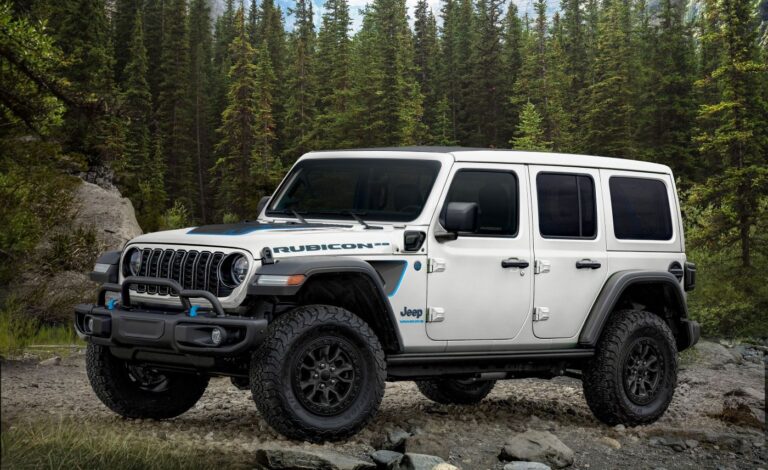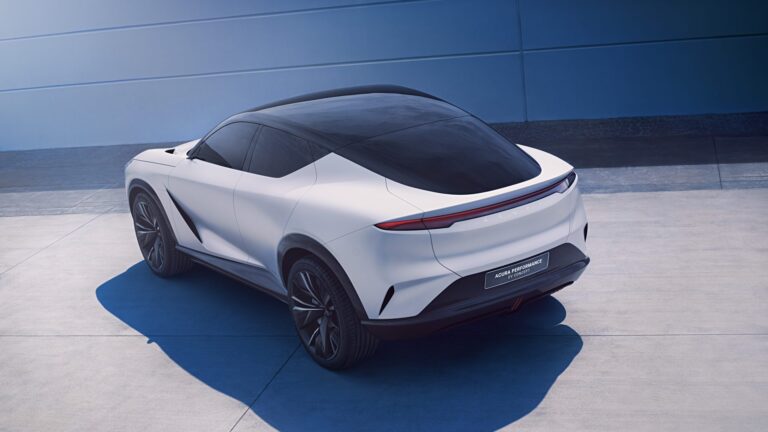The Slingshot looked like a hybrid between a motorcycle and the Batmobile, with an aggressive front end and a lone, but impressively wide, rear wheel. A curious crowd had gathered, eager to learn more. The owner happily obliged, even popping the hood for a closer look. Then, he climbed in (Slingshots don’t have doors), hit the ignition button, and executed a quick rolling burnout as he merged back onto Highway 101.
Love it or not, the now-familiar Slingshot leaves a lasting impression. You’ll either chuckle at its over-the-top, impractical design or become obsessed with owning one for yourself.
Slingshot Tech: What’s Under the Hood?
A set of sturdy roll bars rises behind the two bucket seats, and the rear tapers off into a fin lined with LED lights. The single rear wheel is attached via a motorcycle-style swingarm with a monoshock suspension. While other three-wheeled vehicles exist, none match the Slingshot in terms of refinement and polish.

For 2025, the Slingshot lineup consists of four variants, all sharing the same basic chassis. The base S and upgraded SL models come equipped with a 180-horsepower Polaris ProStar engine producing 129 lb-ft of torque. While these figures may seem modest compared to traditional cars, the Slingshot weighs just 1,600 pounds—significantly lighter than most economy cars—giving it an impressive power-to-weight ratio.
The top-tier SLR and R models up the ante with 204 horsepower and 150 lb-ft of torque. Buyers can choose between a five-speed manual transmission or a five-speed automatic, with power sent to the rear wheel via a carbon-fiber-reinforced belt drive.
A Purist’s Driving Experience
Unlike modern cars loaded with safety tech, the Slingshot remains refreshingly analog. There’s no lane-keeping assist, no adaptive cruise control, no automatic emergency braking, and no blind-spot monitoring. The focus here is on pure driving engagement. That said, it does include a backup camera for convenience.
Inside, the Slingshot’s mostly waterproof cabin features deep bucket seats reinforced by roll bars. The driver’s display includes a small LCD screen between the analog speedometer and tachometer, while a center display—2.7 inches on the S model or 7 inches on SL, SLR, and R trims—offers access to Apple CarPlay, vehicle settings, and audio controls. Rockford Fosgate provides the audio system, which has been upgraded for 2025 to pack even more punch.

What’s New for 2025?
For its milestone tenth anniversary, Polaris has introduced several upgrades, including a more powerful ProStar engine in the higher trims, refined suspension tuning for a smoother ride, and improved audio systems. The R-spec models are available with either a stick shift or paddle shifters for the automatic version.
Customization remains a highlight, with buyers able to choose between 18- and 20-inch wheels and four accessory packages: Escape, Drive, Show, and Design. These packages offer various enhancements such as a soft top, upgraded audio, Brembo brakes, a rear plexiglass windscreen, and the Slingshade quasi-hardtop. Unlike past models, all 2025 Slingshots come standard with a front windscreen.
2025 Pricing and Availability
The Slingshot lineup starts at $24,999 for the base S model with a manual transmission, while the SL comes in at $28,999. The SLR is priced at $31,399, and the high-performance R model tops the range at $34,499. Opting for the automatic transmission adds at least $1,500 to the price.
With a wide range of accessories and customization options, buyers can tailor their Slingshot to their liking. The 2025 models are available now, so check with your local dealership if you’re eager to take one for a spin.



